Garden eels belong to anguilliformes, the order anguilla, and are even more closely related to electric eels. Although they are slender and long in form, their habits vary greatly. Apart from the difference in their living environment, there is an obvious difference in their living habits.
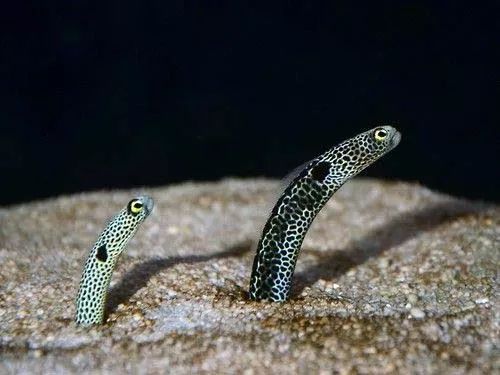
Common eels like to live in clean water, and their migration fish, breeding period will spawn in the sea, in the river growth; Garden eel is a real Marine fish. Most of its body is in the sand, so it will not migrate or live in a place with clear water. As long as the bottom sand is thick enough, the water will be muddy.
The garden eel gets its name from its lifestyle.
The peculiar little fish often buries its lower half in the sand, leaving only its upper half exposed to peck at plankton in the water. From a distance, it looks so much like a wind-blown grass in a garden that it has been nicknamed a garden eel.
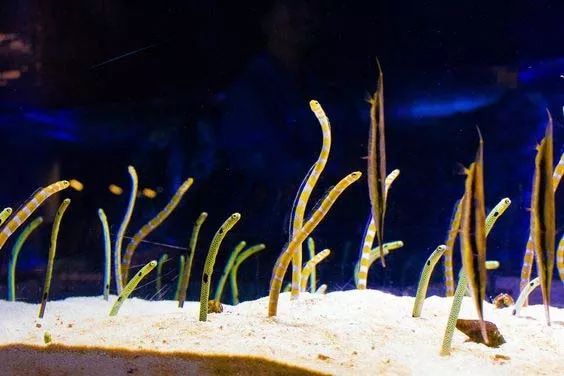
The garden eel may have cute eyes, but don't count on its vision. The seafloor elfish simply retains its cute qualities and comes a little closer when feeding. Otherwise, according to its custom, it would be very reluctant to show its lower half for food.
Wild garden eels rarely leave the sand because there are so many plankton in the water that they can eat by opening their mouths and moving around in the water.
It's a lot more comfortable than the way fish hunt, at least without pretending to be dead all at once
Although it is a distant relative of eels, the garden eel is quite fearless. In the sand, it resembles a startled ground squirrel, retracting at the slightest hint of wind and retracting after a few seconds.
His straight eyes were full of grievances and his manner was as cuddly as a child robbed of a lollipop. When you get close enough, the eel retreats like a network delay.
If such a cute pet had been familiar, it might have been made into a game similar to whack-a-Mole and taken the world by storm.
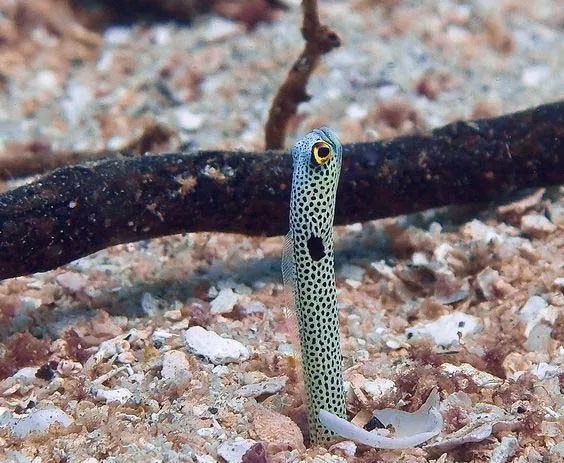
For the most part, a garden eel is only a small part of its body. Hidden in the sand, it is much longer in an aquarium than it is in the wild.
When you see the garden eel turning its cute little head back and forth, its body, more than 30 centimeters buried in the sand, is probably doing something else.
Therefore, if you want to buy garden eels, the aquarium must have enough space, the sand must be thick, the environment must be quiet, and it is best not to force the eels to seek food during feeding time.
Density is also a key parameter. Although garden eels live in groups in the ocean, they are territorial and will usually open their mouths to curse at each other when in conflict. If they can't solve the problem through confrontation and intimidation, they simply open their mouths.
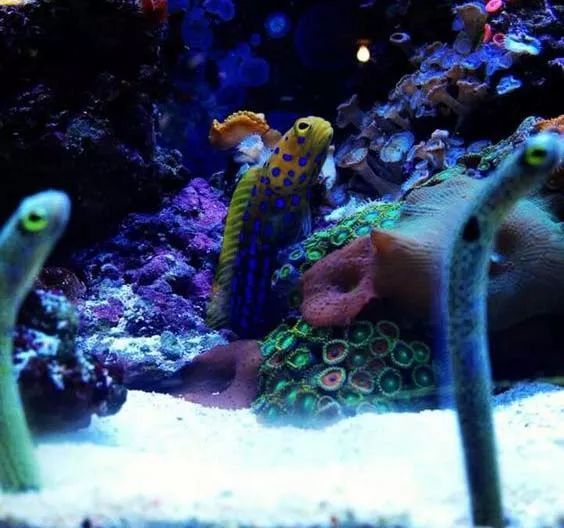
But their attacks are mostly cosmetic and rarely do real damage. Don't be surprised to see their sand-exposed upper bodies intertwined, because mating season is here and they're doing shy things.
Garden eels are almost universally known for their cowardice, and there are plenty of science posts that simply say they "die of fear," but I'd like to be skeptical.
If the creature was so fragile, it wouldn't have survived its harsh environment, even if it had been blessed. And there are businesses online that sell garden eels, and if they do die of fright, they have to be transported carefully to make sure they make it to their buyers.
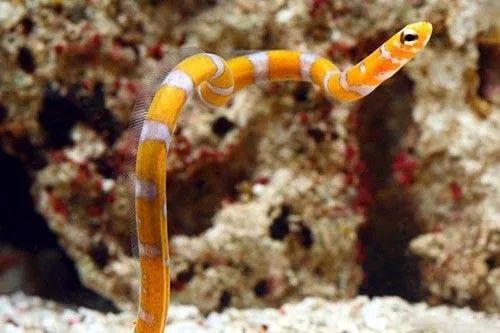
If you want to buy garden eel, you'd better go to the nearby aquarium market for consultation. If you can't find it, you can't order it on the e-commerce platform.
It costs more than 50 yuan, not a few yuan as some articles say. It is also best to keep the eel tank free of aggressive fish, lest it be bullied to collapse.
These little creatures are often found in various aquariums. Their bright colors and cute appearance make them especially attractive. Perhaps because of its timid nature and almost non-threatening aggressiveness, few people are willing to open a single tank for it.